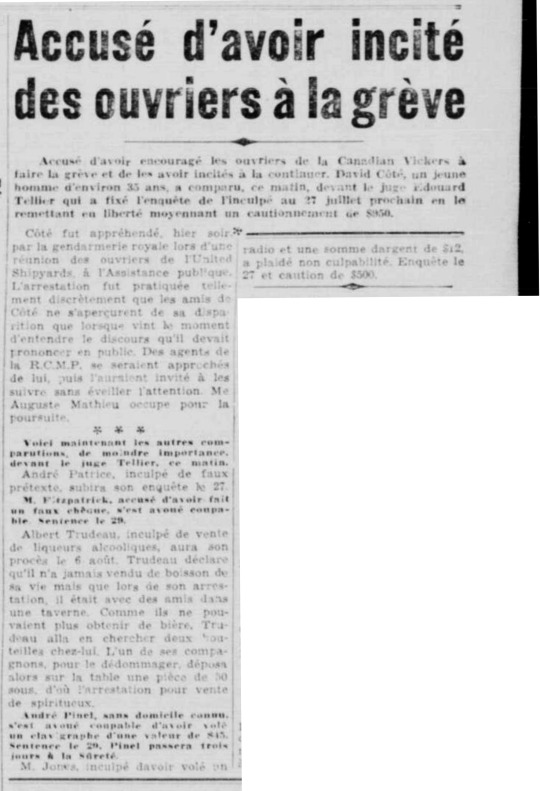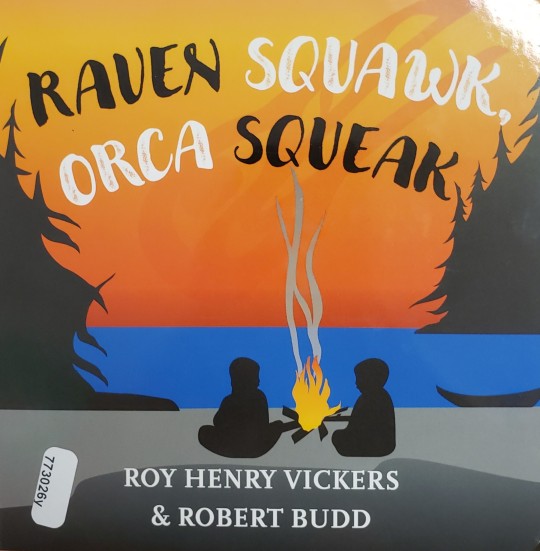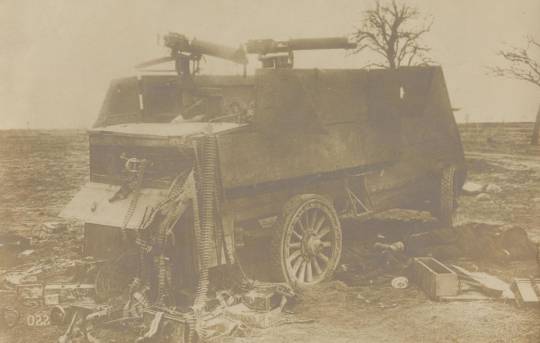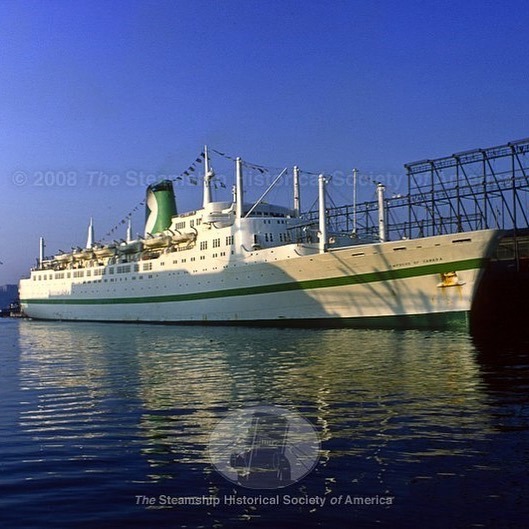#canadian vickers
Text

1943 Consolidated PBV-1A Catalina "Miss Pickup" lifting off at the Imperial War Museum, Duxford
#Consolidated#PBY#PBV-1A#Catalina#Canso#Mop#flying boat#seaplane#Maritime patrol bomber#vintage aircraft#Boeing Canada (PB2B)#Canadian Vickers
80 notes
·
View notes
Text

"Accusé d'avoir incité des ouvriers à la grève," La Patrie. July 25, 1943. Page 43.
---
Accusé d'avoir encouragé les ouvriers de la Canadian Vickers à faire la grève et de les avoir incités à la continuer. David Côté, un jeune homme d'environ 35 ans, a comparu, ce matin, devant le juge Edouard Tellier qui a fixé l'enquête de l'inculpé au 27 juillet prochain en le remettant en liberté moyennant un cautionnement de $950.
----
Côté fut appréhendé, hier soir par la gendarmerie royale lors d'une radio réunion des ouvriers de l'United Shipyards, à l'Assistance publique. L'arrestation fut pratiquée tellement discrètement que les amis de Côté ne s'aperçurent de sa disparition que lorsque vint le moment d'entendre le discours qu'il devait prononcer en public. Des agents de la R.C.M.P. se seraient approchés de lui, puis l'auraient invité à les suivre sans éveiller l'attention. Me Auguste Mathieu occupe pour la poursuite.
Voici maintenant les autres comparutions, de moindre importance. devant le juge Tellier, ce matin.
André Patrice, inculpé de faux prétexte, subira son enquête le 27.
M. Fitzpatrick, accusé d'avoir fait un faux chèque, s'est avoué coupable. Sentence le 29.
Albert Trudeau, inculpé de vente de liqueurs alcooliques, aura son procès le 6 août. Trudeau déclare qu'il n'a jamais vendu de boisson de sa vie mais que lors de son arrestation, il était avec des amis dans une taverne. Comme ils ne pouvaient plus obtenir de bière. Trudeau alla en chercher deux bouteilles chez-lui. L'un de ses compagnons, pour le dédommager, déposa alors sur la table une pièce de 30 sous, d'où l'arrestation pour vente de spiritueux.
André Pinel, sans domicile connu, s'est avoué coupable d'avoir volé un clavgraphe d'une valeur de $45. Sentence le 29. Pinel passera trois jours à la Sûreté.
M. Jones, inculpé d'avoir volé un et une somme d'argent de $12, a plaidé non culpabilité. Enquête le 27 et caution de $500.
#montreal#recorder's court#united shipyards#canadian vickers#political prisoner#union organizing#agitator#working class politics#suppression of dissent#working class struggle#false pretences#passing forged cheques#theft#canada during world war 2#crime and punishment in canada#history of crime and punishment in canada
1 note
·
View note
Text

Canadian Vickers Plant installation on Notre Dame near Viau, 1915
4 notes
·
View notes
Text

Raven Squawk, Orca Squeak (2020)
Story and Art: Roy Henry Vickers & Robert Budd
Canadian









#first nations#indigenous#canadian#canlit#Roy Henry Vickers#Robert Budd#raven squawks orca squeaks#pnw#pacific northwest#board books#animals#hockey#long houses#sea lions#geese#canoes#bears#eagles#picture books#kid books#kidlit#children's books#2020s#20s
0 notes
Text

Canadian troops on the move somewhere on the Western Front. Note the truck on the side with Vickers machine guns at ready.
#history#historical photos#world war one#the first world war#world war 1#wwi#the great war#1917#canadian history#ww1#world war 1 stories
77 notes
·
View notes
Text

Victoria Cross for Lancaster pilot Squadron Leader Ian Bazalgette – August 1944
Header main image: ‘Beyond Praise’ – Bazalgette’s blazing Lancaster ND811, ‘F2-T’, with only one engine still running, skims the village of Senantes, France, before crashing on 4th August 1944. (Artwork: Len Krenzler)
Eighty years ago this month, in August 1944, an incredible and selfless act of supreme gallantry by Lancaster Pathfinder pilot Squadron Leader Ian Willoughby “Baz” Bazalgette resulted in the subsequent award to him of a posthumous Victoria Cross (VC).
Ian Bazalgette was born in the Canadian city of Calgary in October 1918, to parents of English and Irish background. The family always called him “Will” and in 1927, when he was nine years old, they all moved back to England. When the Second World War began, he was almost 21 and having volunteered for military service he initially served with the Royal Artillery, being commissioned in 1940, before transferring to the RAF Volunteer Reserve. After completing his pilot training, he joined 115 Squadron at Mildenhall in September 1942, to fly the Vickers Wellington twin-engine bomber operationally. In the RAF his nickname became “Baz”.
When he had completed 13 operations flying Wellingtons, Bazalgette and his squadron transitioned to the four-engine Lancaster and he flew a further 15 ‘ops’ against heavily defended targets in Europe, surviving some harrowing experiences, including a crash landing. He was awarded the Distinguished Flying Cross (DFC), with the citation mentioning his “great courage and determination in the face of the enemy”. When his first operational tour was complete, he was posted as an instructor at No 20 Operational Training Unit, based at Lossiemouth in Scotland. Then in April 1944 he was ‘head hunted’ for the Pathfinder Force and joined 635 Squadron at RAF Downham Market, Norfolk, as a flight commander with promotion to acting squadron leader. He completed a number of Pathfinder target- marking operations in the lead-up to D-Day and afterwards.

A 635 Sqn Lancaster with the unit’s ‘F2’ code letters at Downham Market in 1944. This aircraft has the H2S radar dome under the rear fuselage and is fitted with the then secret ‘Village Inn’ radar-directed Airborne Gun Laying Turret (AGLT) equipment for the rear turret. Bazalgette flew Lancaster ED811 ‘F2-T’ on 4th August 1944.
On 4th August 1944, on his 58th operation, Bazalgette was the master bomber for a daylight raid against the V-1 flying-bomb storage caves at Trossy St Maxim, France. He was tasked with marking the target and controlling the Main Force bombing. Nearing the target his Lancaster, ND811 ‘F2-T’, came under heavy anti-aircraft fire; both starboard engines were put out of action and serious fires broke out in the starboard wing and the fuselage. As the deputy master bomber had already been shot down, with the deaths of all those on board, the success of the attack depended on Bazalgette. Knowing this, he pressed onto the target, despite the state of his Lancaster, and marked it accurately.

Sqn Ldr Ian Bazalgette DFC (far left) with his usual 635 Sqn crew (L to R): Geoff Goddard, Ivan Hibbert, Chuck Godfrey, Bob Hurnhall (who was replaced by Vernon Leeder on 4th August 1944), Douglas Cameron and George Turner.
After dropping his markers and bombs, Bazalgette’s crippled Lancaster dived almost out of control and bursts of ‘flak’ hit the nose of the aircraft badly injuring the bomb aimer, Flight Lieutenant Ivan Hibbert, whose right arm was almost torn off. The flight engineer, Sergeant George Turner, and the wireless operator, Flying Officer Charles “Chuck” Godfrey, dragged Hibbert from his position in the nose in a critical condition, carried him to the rest bunk, applied a tourniquet and injected him with morphine. The crew attempted to fight the flames inside the aircraft, but smoke filled the fuselage and the mid-upper gunner, Flight Sergeant Vernon Leeder RAAF, was overcome by fumes. Leeder was not part of Bazalgette’s usual crew, but had replaced Flight Sergeant Hurnhall for this sortie. Then the port inner engine failed and, with only one engine running, altitude could no longer be maintained. Bazalgette ordered those of his crew able to do so to abandon the aircraft, and four of them bailed out from low altitude. All four survived and subsequently evaded capture with the help of the French Resistance. Aware that his bomb aimer and the mid-upper gunner could not bail out and refusing to leave them, Bazalgette attempted to crash-land the burning Lancaster in a last effort to save them. He managed to put the aircraft down in a field near the small French village of Senantes, but moments later the Lancaster exploded and Bazalgette and his two comrades were killed.

Left: Sqn Ldr Ian “Baz” Bazalgette. Centre: Bazalgette’s medals. Right: The BBMF Lancaster flies in tribute to all who flew with Bomber Command during the Second World War and especially those who lost their lives. (Lancaster image: Lisa Harding).
In August 1945 Squadron Leader Ian W Bazalgette DFC was posthumously awarded the Victoria Cross for his heroic sacrifice in not abandoning his two wounded comrades who remained on board. The citation for his VC in the London Gazette included the words, “His heroic sacrifice marked the climax of a long career of operations against the enemy. He always chose the more dangerous and exacting roles. His courage and devotion to duty were beyond praise.”
LEST WE FORGET
@memorialflightclub.com
10 notes
·
View notes
Text

The Battle of Flers Courcelette 15 -22 September: Canadians testing a Vickers machine gun.
13 notes
·
View notes
Photo

Canadian Armored Autocar of the Brutinel Brigade armed with a pair of Vickers machine guns knocked out during WWI
22 notes
·
View notes
Photo

On December 12, 1970, this picture of Canadian Pacific's Empress Of Canada b) Mardi Gras was taken at New York in her later Canadian Pacific Steamships colors. She was built by Vickers-Armstrongs at Newcastle-on-Tyne in 1961. Braun Brothers Collection, SSHSA Archives. See more from this collection at bit.ly/BraunBrothersCollection. #OnThisDay #shiphistory (at The Steamship Historical Society of America) https://www.instagram.com/p/CmE4dgosvKB/?igshid=NGJjMDIxMWI=
8 notes
·
View notes
Text
Events 9.3 (after 1930)
1925 – USS Shenandoah, the United States' first American-built rigid airship, was destroyed in a squall line over Noble County, Ohio. Fourteen of her 42-man crew perished, including her commander, Zachary Lansdowne.
1933 – Yevgeniy Abalakov is the first man to reach the highest point in the Soviet Union, Communism Peak (now called Ismoil Somoni Peak and situated in Tajikistan) (7495 m).
1935 – Sir Malcolm Campbell reaches a speed of 304.331 miles per hour on the Bonneville Salt Flats in Utah, becoming the first person to drive an automobile over 300 mph.
1939 – World War II: France, the United Kingdom, New Zealand and Australia declare war on Germany after the invasion of Poland, forming the Allied nations. The Viceroy of India also declares war, but without consulting the provincial legislatures.
1939 – World War II: The United Kingdom and France begin a naval blockade of Germany that lasts until the end of the war. This also marks the beginning of the Battle of the Atlantic.
1941 – The Holocaust: Karl Fritzsch, deputy camp commandant of the Auschwitz concentration camp, experiments with the use of Zyklon B in the gassing of Soviet POWs.
1942 – World War II: In response to news of its coming liquidation, Dov Lopatyn leads an uprising in the Ghetto of Lakhva (present-day Belarus).
1943 – World War II: British and Canadian troops land on the Italian mainland. On the same day, Walter Bedell Smith and Giuseppe Castellano sign the Armistice of Cassibile, although it is not announced for another five days.
1944 – Holocaust: Diarist Anne Frank and her family are placed on the last transport train from the Westerbork transit camp to the Auschwitz concentration camp, arriving three days later.
1945 – A three-day celebration begins in China, following the Victory over Japan Day on September 2.
1950 – "Nino" Farina becomes the first Formula One Drivers' champion after winning the 1950 Italian Grand Prix.
1954 – The People's Liberation Army begins shelling the Republic of China-controlled islands of Quemoy, starting the First Taiwan Strait Crisis.
1967 – Dagen H in Sweden: Traffic changes from driving on the left to driving on the right overnight.
1971 – Qatar becomes an independent state.
1976 – Viking program: The American Viking 2 spacecraft lands at Utopia Planitia on Mars.
1978 – During the Rhodesian Bush War a group of ZIPRA guerrillas shot down civilian Vickers Viscount aircraft (Air Rhodesia Flight 825) with a Soviet-made SAM Strela-2; of 56 passengers and crew 38 people died in crash, 10 were massacred by the guerrillas at the site.
1981 – The Convention on the Elimination of All Forms of Discrimination Against Women, an international bill of rights for women, is instituted by the United Nations.
1987 – In a coup d'état in Burundi, President Jean-Baptiste Bagaza is deposed by Major Pierre Buyoya.
1989 – Cubana de Aviación Flight 9046 crashes into a residential area of Havana shortly after takeoff from José Martí International Airport, killing 150.
1989 – Varig Flight 254 crashes in the Amazon rainforest near São José do Xingu in Brazil, killing 12.
1997 – Vietnam Airlines Flight 815 (Tupolev Tu-134) crashes on approach into Phnom Penh airport, killing 64.
2001 – In Belfast, Protestant loyalists begin a picket of Holy Cross, a Catholic primary school for girls.
2004 – Beslan school siege results in over 330 fatalities, including 186 children.
2010 – After taking off from Dubai International Airport, UPS Airlines Flight 6 develops an in-flight fire in the cargo hold and crashes near Nad Al Sheba, killing both crew members on board.
2016 – The U.S. and China, together responsible for 40% of the world's carbon emissions, both formally ratify the Paris global climate agreement.
2017 – North Korea conducts its sixth and most powerful nuclear test.
0 notes
Text

Unboxing: 8th Army and Jock Lewes
This post is the unboxing of a few items I bought from Warlord Games for my 8th Army project for Bolt Action and jock Lewes for my SAS/LRDG force.



The parcel arrived well packed and secure with a free sprue of Italian Bersaglieri (I hope I spelt that right) as a gift from Warlord Games

The first model in the package was Warlord's soldier of fortune for September, Jock Lewes. Jock Lewes was one of the founding members of the SAS and inventor of the Lewes bomb which they used to great effect in the Western Desert against German and Italian planes.
The blister pack contained the following:
SAS hero Jock Lewes (metal)
Base (plastic)

The second item I unpacked was an 8th Army HQ blister. I rather like these models, they're fun and full of character, particularly the officer who is standing there with his mug of tea and pipe, the other model I like is the radio operator who is feeding a monkey, this model I shall use as a forward observer. The remaining two models in the set are a soldier with an smg in a tin helmet, I shall use him as a second lieutenant and a medic carrying a stretcher.
The blister pack contained the following:
Officer (metal)
Radio operator (metal
Medic (metal)
Soldier with smg (metal)
Bases (plastic)


The final thing that I received was the 8th Army starter set. At the time of ordering the starter set was in a sale thus resulting in me purchasing it before I really planned too. I struggled to work out how to fit the boxset into a standard reinforced platoon, it also didn't fit into any of the theatre selectors in the Armies of Great Britain book, I scoured the Western Desert campaign book and found the armies of the commonwealth selector, this allowed for everything in the box to be used. The contents of the box and the 8th Army HQ set gave me a solid 1000pt Army.
The plastic infantry sprues contain a wealth of options for the modeler. There are a variety of head options, Punjabi Mussalman/Yusufzai, Scottish Tam O'Shanter, Sikh and finally heads with tin helmets. There are options for smgs, rifles, Boys anti-tank rifles, Bren guns, 2"mortar and options to build officers as well, along with the commonwealth sprue (not included in this box set) every head option for the British and commonwealth forces is available. The commonwealth sprue has the same options as the 8th army sprue except it has heads for South Africans, Canadians, Australians and SAS/SBS/LRDG, a sprue I used extensively for my SAS project...I digress, back to the 8th Army Starter set.
The Starter set contains a number of metal artillery and support weapons these are 6-pdr anti-tank gun, 25-pdr light artillery, Vickers MMG team and finally a 3" mortar team, these are all produced in 8th Army uniforms in tin helmets.
The set comes with two plastic Bren carriers and metal 8th Army crew to go in them. The Bren carriers are, in my opinion fantastically useful in this Army as they can transport five infantry around or tow the artillery.
There is a number of other things also included these are assembly instructions, decals, vehicle damage markers, stat cards for the bren carriers and plastic bases













The boxset contains the following:
36x British 8th Army infantry (plastic)
1x 8th Army 6-pdr anti-tank gun (metal)
1x 8th Army 25-pdr light artillery (metal)
1x 8th Army Vickers MMG team (metal)
1x 8th Army 3" medium mortar (metal)
2x Bren carriers and 8th army passengers (plastic and metal)
Assembly instructions
Stat cards
Vehicle damage markers
Plastic bases
I am looking forward to painting these models, building them not so much. They're a nice set at a decent price (even better getting them in a sale) and overall I am pleased with it all. I hope this unboxing may be of some help to someone looking to get into the 8th Army for Bolt Action or any other game. I will soon post the armylist up for the box set but that is a post for another day.
1 note
·
View note
Link
0 notes
Text

"Au procès de David Côté," La Patrie. August 4, 1943. Page 4.
----
Le procès de David Coté, accusé d'avoir incité les ouvriers de Canadian Vickers à faire la grève et à rester en grève, est commencé ce matin devant le juge Armani Cloutier. Une longue argumentation eut lieu entre Me Gérald Fauteux, représentant le ministère public, et Me Guy Merrill-Desaulniers, représentant de la défense, sur la validité des accusations portées contre l'inculpé.
Me Desaulniers demande au tribunal le renvoi immédiat des deux plaintes déclarant qu'il était illegal de faire subir un procès sur deux chefs d'accusation à la fois.Le juge Cloutier rejeta les objections de Me Desaulniers.
Au moment où nous allons sous presse Me Fauteax interroge M. Len Stewart, 2668, Saint-Zotique. Ce procès durera tout l'après-midi.
#montreal#recorder's court#united shipyards#canadian vickers#political prisoner#union organizing#agitator#working class politics#suppression of dissent#working class struggle#illegal strike#strike#war workers#canada during world war 2#crime and punishment in canada#history of crime and punishment in canada
0 notes
Text
Canada's Resilience: Honoring National War Memorial

The Significance of the National War Memorial
On the somber ninth anniversary of the attack at the National War Memorial and on Parliament Hill, Prime Minister Justin Trudeau issued a poignant statement, remembering the fallen and emphasizing the unity of the nation. This attack, which occurred on October 22, 2014, left one dead and several injured, leaving an indelible mark on Canada and its people.
Honoring the Brave
Trudeau paid tribute to Corporal Nathan Cirillo, a sentinel guarding the Tomb of the Unknown Soldier. He also honored Warrant Officer Patrice Vincent, who lost his life two days prior in a separate attack in Saint-Jean-sur-Richelieu, Quebec. These two brave members of the Canadian Armed Forces had unwavering dedication to their country. On this day, Canadians remember them with the deepest condolences to their families, loved ones, and colleagues.
Saluting First Responders and Heroes
The Prime Minister also extended gratitude to the first responders who risked their lives to mitigate the attacks and keep Canadians safe. Furthermore, he praised the bystanders who acted selflessly in the face of danger to aid the victims. Their courage and swift action exemplified the resilience and unity that define Canada in the face of adversity.
Timeline: Events Leading up to the Attack
October 22, 2014 - The Day That Shook Canada
Nine years ago, on October 22, 2014, Canada was confronted with a tragedy that sent shockwaves across the nation. A meticulously planned act of terrorism unfolded, catching the country by surprise. The perpetrator, Michael Zehaf-Bibeau, already known to Canadian authorities due to his history of criminal activity, orchestrated the attack that would change Canada forever.
The Attack: Details of the Incident
An Act of Terror on Sacred Ground
On that fateful morning, Zehaf-Bibeau approached the National War Memorial, armed with a lever-action rifle. The assailant shot Corporal Nathan Cirillo, who was guarding the monument, tragically losing his life in service to his country. Zehaf-Bibeau then carjacked a vehicle and rapidly advanced towards Parliament Hill, breaching security and gaining entry to the Centre Block, the heart of Canada's government.
Inside Parliament, a brief firefight unfolded between the assailant and security personnel, ultimately culminating in Sergeant-at-Arms Kevin Vickers stopping Zehaf-Bibeau. Although the attack had a limited scope, it exposed vulnerabilities in Canada's security infrastructure, leading to a comprehensive review of the nation's readiness to confront such threats.
Response and Aftermath: Canada's Reaction and Consequences
Unity in the Face of Adversity
Canada's response to the attack was characterized by unity and resilience. This tragic incident served as a stark reminder that no nation is entirely immune to acts of terrorism, regardless of its reputation for peace and security. The nation united in mourning the loss of Corporal Nathan Cirillo and celebrated the bravery of those who confronted the assailant.
Countering Radicalization
The attack prompted a nationwide conversation about the factors contributing to the radicalization of individuals like Zehaf-Bibeau. Consequently, the government pledged to address these root causes and work diligently towards preventing radicalization, with the aim of building a more inclusive and tolerant society.
Enhanced Security Measures
Afterward, authorities implemented a series of security measures to safeguard Canadian institutions and its citizens. They increased funding for counter-terrorism efforts, which improved intelligence-sharing among security agencies and bolstered border security. New legislation enhanced the powers of law enforcement agencies in monitoring and countering potential threats.
Security agencies also collaborated with communities to identify individuals at risk of radicalization and provide support to divert them from extremism. Public awareness campaigns were launched to educate Canadians about the signs of radicalization and how to report suspicious activities.
The attack on the National War Memorial and Parliament Hill was a tragic event that prompted Canada to reflect on its security posture and adapt to an evolving threat landscape. It demonstrated the nation's resilience and unity in the face of adversity. Canada's response, with its focus on both security and the prevention of radicalization, serves as an example of a nation determined to maintain its commitment to peace and security while safeguarding its citizens from the threat of terrorism.
Sources: THX News, Wikipedia & The Canadian Government.
Read the full article
#Canada'sresilienceinadversity#CanadianArmedForcestribute#MichaelZehaf-Bibeauincident#NationalWarMemorialCanada#Ottawaattackanniversary#ParliamentHillsecurityreview#PreventingradicalizationinCanada#Rememberingfallensoldierstoday#Securitymeasuresafterattack#Sergeant-at-ArmsKevinVickers
0 notes
Text

The twin-engined Hampden would serve with Bomber Command in the first years of the Second World War, taking part in the first raid on Berlin in August 1940 and in 'Operation Millennium' during May 1942. The Handley Page Hampden also served with Coastal Command, playing a part in the U-boat battle, before being phased out of service.
Handley Page Hampden
When the Air Ministry issued Specification B.9/32 during September 1932 which called for a twin-engined bomber Handley Page submitted their H.P.52 design which would compete against Vickers 271 design, which would go on to become the Vickers Wellington. The Handley Page H.P.52, very different in appearance to its rival featuring a long narrow fuselage, which earned it the nickname 'Flying Suitcase', would have a crew of four made up of pilot, navigator/bomb-aimer, wireless operator and gunner. The Handley Page H.P.52 prototype flew for the first time, nearly fours years later, when it took to the skies on the 21st June 1936 with Major James Cordes at the controls.
With a new specification of B.30/36 the 15th August 1936 saw an order for 180 Handley Page Hampden Mk Is with the 24th May 1938 seeing the first production example flying. The following month on the 24th June 1938 the Viscountess Hampden officially christened the type. At the same time of the original order for 180 aircraft another order for 100 aircraft, this time powered by the Napier Dagger engine, was placed under Specification B.44/36. Production of these would be handed over to Short Brothers and Harland and this aircraft would be renamed the Handley Page Hereford.
The Hampden Mk I was powered by a pair of 1,000-hp Bristol Pegasus XVIII engines which gave the aircraft a top speed of 254 mph, range of 1,885 miles with a service ceiling of 19,000 ft. Armament was six 0.303-in machine-guns with two firing forward and two each in the dorsal and ventral positions, bomb load was 4,000lb. The new aircraft was sent to the Aeroplane and Armament Experimental Establishment at Martlesham Heath for trials and this was followed by trials at the Central Flying School based at RAF Upavon.
The Royal Air Force began to receive their new aircraft and the first to receive the new type were No. 49 Squadron based at RAF Scampton, who at the time were using the Hawker Hind, on the 20th September 1938 and by the time the Second World War (1939 - 1945) broke out in September 1939 ten squadrons were using the Hampden and early reconnaissance operations were completed during the same month. However on the 29th September 1939 eleven Hampdens were undertaking reconnaissance duties over the Heligoland Bight area when five of the aircraft were shot down by enemy fighters and as a result the type was moved to night time operations. The aircraft would again be used in daylight raids during the Norwegian campaign but once again suffered heavy losses. Despite this early setback the Handley Page Hampden soon found its niche as a minelayer with a total of 1,209 sorties flown by the close of 1940.
Over the next two years the Hampden played a role in the Royal Air Forces bombing offensive, including taking part in the first raid on Berlin, Germany on the 25th August 1940. Although the aircraft was coming to the end of its front line service with Bomber Command in 1942, it would take part in 'Operation Millennium', the first 1,000 bomber raid by Bomber Command, on the 30th May 1942. This saw 1,047 aircraft of all types attack Cologne, Germany, with 41 aircraft lost and over 400 people killed. Its last Bomber Command operation on the 15th September 1942 saw No. 408 Squadron, Royal Canadian Air Force Hampdens take part in a raid on Wilhelmshaven, Germany. Shortly before this a number of Hampdens were sent to serve as protection for convoys in North Russia however this was beset with problems as of the thirty two aircraft, flying from the Shetlands on the 4th September 1942, sent only twenty three would arrive so instead the Russians were given the aircraft.
Serving with Coastal Command as a torpedo bomber, known as the Hampden TB Mk I, April 1942 saw Coastal Command begin to receive its first aircraft when No. 144 Squadron was transferred from Bomber Command, followed by No. 455 Squadron, Royal Australian Air Force on the 27th April 1942. During its time with Coastal Command the Hampden would be used for convoy escort and maritime reconnaissance. By 1943 the Handley Page Hampden was beginning to be removed from service and No. 455 Squadron, RAAF based at RAF Sumburgh were the last squadron to use the type for operations before they received Bristol Beaufighters.
By the time production of the Hampden stopped 1,432 of the type had been produced.
Technical Details
Click on the aircraft image to view a larger version.
Top Speed Range Service Ceiling Armament
Hampden Mk I 254 mph 1,885 miles 19,000 ft six 0.303-in machine-guns
4,000lb bombs
3 notes
·
View notes
Video
Canadian Vickers Varuna Mk.II
by kitchener.lord
21 notes
·
View notes